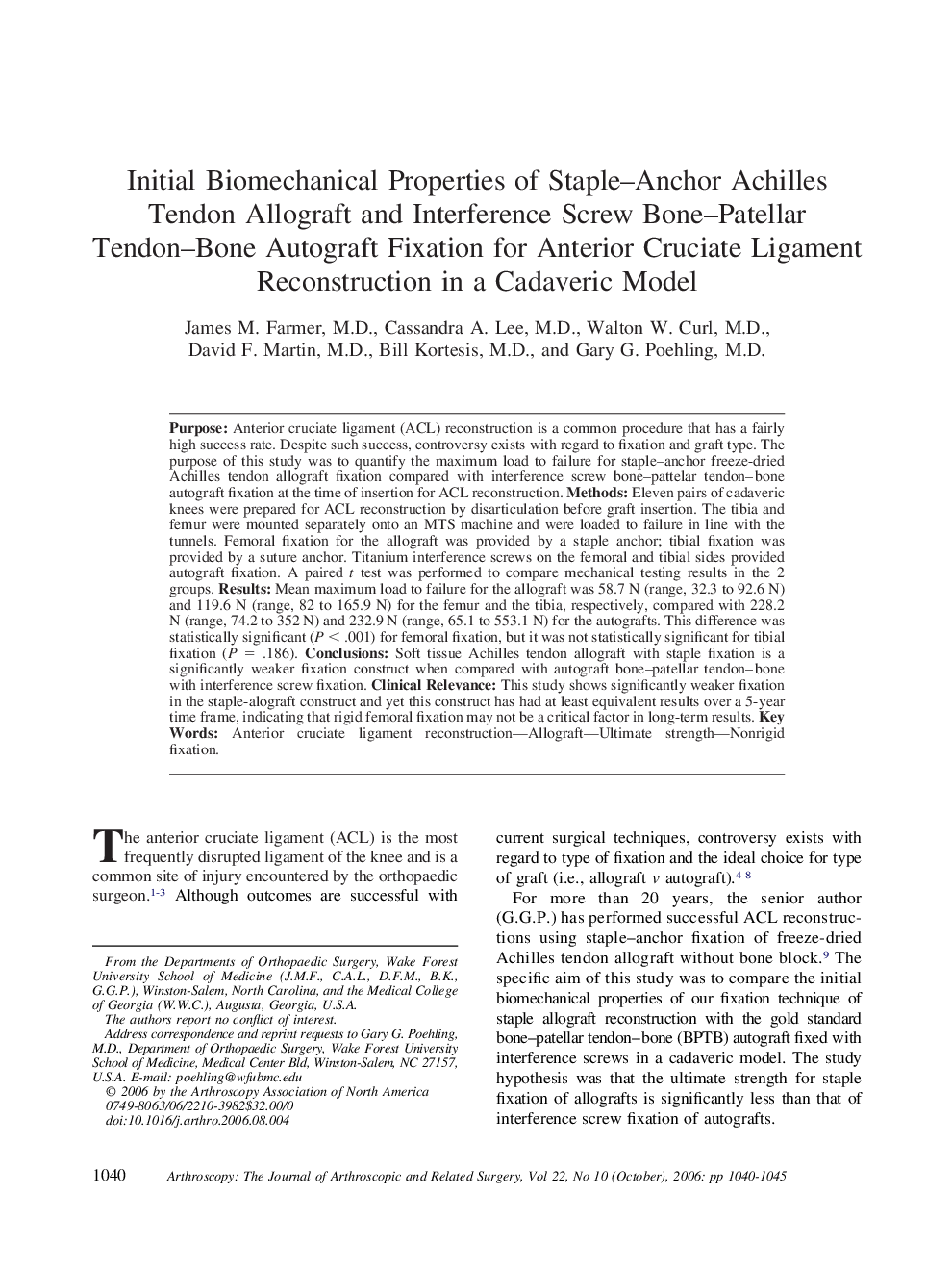| کد مقاله | کد نشریه | سال انتشار | مقاله انگلیسی | نسخه تمام متن |
|---|---|---|---|---|
| 4047094 | 1603605 | 2006 | 6 صفحه PDF | دانلود رایگان |

Purpose: Anterior cruciate ligament (ACL) reconstruction is a common procedure that has a fairly high success rate. Despite such success, controversy exists with regard to fixation and graft type. The purpose of this study was to quantify the maximum load to failure for staple–anchor freeze-dried Achilles tendon allograft fixation compared with interference screw bone–pattelar tendon–bone autograft fixation at the time of insertion for ACL reconstruction. Methods: Eleven pairs of cadaveric knees were prepared for ACL reconstruction by disarticulation before graft insertion. The tibia and femur were mounted separately onto an MTS machine and were loaded to failure in line with the tunnels. Femoral fixation for the allograft was provided by a staple anchor; tibial fixation was provided by a suture anchor. Titanium interference screws on the femoral and tibial sides provided autograft fixation. A paired t test was performed to compare mechanical testing results in the 2 groups. Results: Mean maximum load to failure for the allograft was 58.7 N (range, 32.3 to 92.6 N) and 119.6 N (range, 82 to 165.9 N) for the femur and the tibia, respectively, compared with 228.2 N (range, 74.2 to 352 N) and 232.9 N (range, 65.1 to 553.1 N) for the autografts. This difference was statistically significant (P < .001) for femoral fixation, but it was not statistically significant for tibial fixation (P = .186). Conclusions: Soft tissue Achilles tendon allograft with staple fixation is a significantly weaker fixation construct when compared with autograft bone–patellar tendon–bone with interference screw fixation. Clinical Relevance: This study shows significantly weaker fixation in the staple-alograft construct and yet this construct has had at least equivalent results over a 5-year time frame, indicating that rigid femoral fixation may not be a critical factor in long-term results.
Journal: Arthroscopy: The Journal of Arthroscopic & Related Surgery - Volume 22, Issue 10, October 2006, Pages 1040–1045